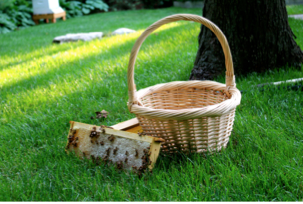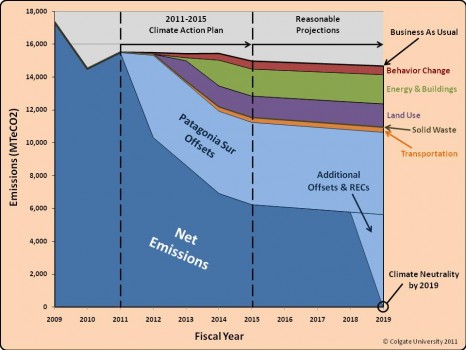I am still energized from my recent west coast visit to Portland, Oregon. Steve Dickinson ’13, sustainability office program assistant, Katie Williams ’15, Geography and History double major, and I where in town for the annual higher education sustainability conference (AASHE 2014). The conference attracted over 2,000 sustainability practitioners from across the country and beyond. The sustainability movement in higher education has exploded over the past few years. Amazing progress has been made in areas of climate action planning, local and sustainable food procurement, alternative transportation, renewable energy, recycling and composting, water conservation, land use, and social justice issues. The highlight of the conference was connecting with other Colgate graduates who are now doing incredible work in the field of sustainability. Dr. Lisa Cleckner ’86 is the director of the Finger Lakes Institute at Hobart and William Smith Colleges. Caitlin Steele ’01 is the Director of Sustainability & Energy at San Francisco State University. Jessica Prata ’05 is now the Assistant Vice President of Environmental Stewardship at Columbia University. And, Adam Costello ’10 is the Sustainability Fellow to the SUNY Office of Sustainability & Research Foundation.
Since 2009, Colgate’s sustainability program has gained national recognition and we are widely viewed as a national leader in sustainability in higher education. Katie and I were at the conference to present on Colgate’s Campus Master Plan and our institutional commitment to carbon neutrality by 2019. Katie represents Colgate very well and did a fantastic job during our presentation and fielding questions from the audience. Perhaps she will be a future star in the growing field of sustainability professionals. Our session was well-attended and generated significant discussion.
The highlight of my trip was meeting with the Alumni Club of Portland in a warm and cozy downtown Portland restaurant. A huge thank you to Richard Beck ’71 and Ginny Haines ’72 for all their work organizing the group. The atmosphere was perfect and I thoroughly enjoyed the conversations I had with many of our devoted alumni and parents of current students. Of course, we discussed my favorite topic – sustainability! But I also had the chance to connect with a few of our alumni on a deeper level. I learned about the life, work, and interests of alumni living in Portland. I heard fascinating personal stories of roads traveled since Colgate. We were all also impressed by Richard’s impassioned work on the West Coast Electric Highway—an impressive network of electric vehicle charging stations that run through Washington and Oregon and into California. Katie, Steve, and I shared our Colgate experience and why advancing sustainability is so important at Colgate and beyond.
I returned from Portland feeling motivated and privileged that I have the opportunity to collaborate with so many incredible Colgate alumni. Thank you to Laura Masse and Tim McEvoy ’13, Assistant Directors of Alumni Relations, for making this trip possible.







